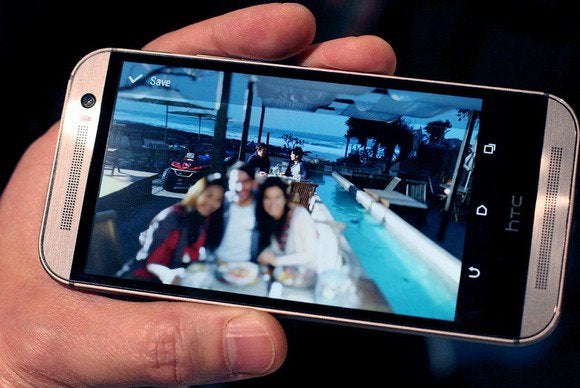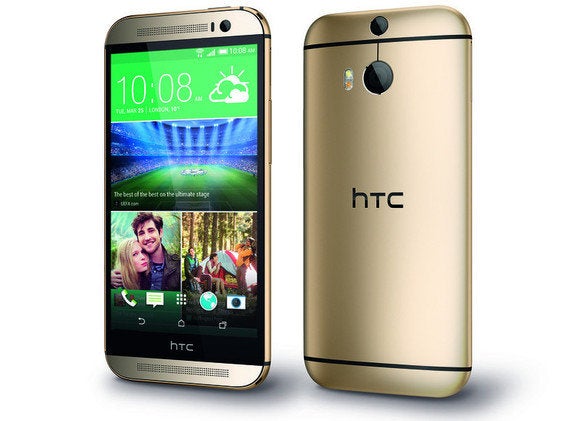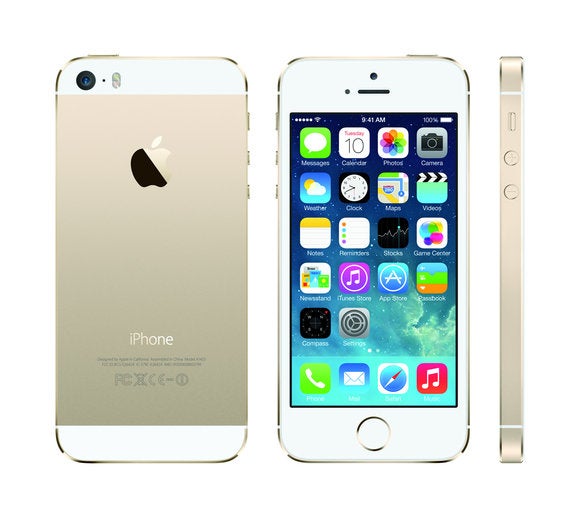You’ll never get either side to admit it, but Android and iOS have learned an awful lot from each other. From the pull-down Notification Center to the fine art of inertial scrolling, the two operating systems may have different spins on things, but at their cores, they’re really quite similar.

Each side receives, shall we say, inspiration from the other. Whether you’re on Team Siri or Team Google Now, you can get some idea of what’s on tap for your next update by studying the other; iOS 7 was a radical departure for Apple, but major features like the Control Center and multitasking card carousel took obvious cues from Jelly Bean, while Projects Butter and Svelte certainly owe a debt to Apple’s engineering.
But when it comes to hardware, our expectations are a little different. Each time a flagship model is due for its annual refresh, the respective rumor mills ramp up with wild speculation that spurs dreams of unique enclosures defying logic and reality, metal-and-glass marvels that redefine what we know about smartphones and shatter every last convention. Even when specs and spy shots leak, we still hold out hope for that QHD 2K display or teardrop design until the inevitable letdown, when the update merely brings a simple riff on the same old concept while packing a few more megahertz and a new sensor or two.
But perhaps we’re not looking closely enough. Much like the respective OSes, maybe we can learn something by studying handsets, too.
Refining design
When the HTC One launched last year, it was a revelation. Closer to an Apple product than an Android one, it was dripping with sex appeal, a chiseled slab of aluminum that flaunted the components other manufacturers tried to hide and turned its speaker grills into an industrial design element. It had an understated flair that was as good to hold as it was to look at, and it even sold well for a while—no small feat for a non-Samsung Android phone. But more importantly, HTC had hit upon a classic design that instantly stacked up against the Galaxies and iPhones of the world.
But when it came time to unveil its successor, HTC pulled something of a curveball. There were no secrets, no speculation—instead of fueling a run-up of rumors, the Taiwan-based electronics manufacturer crafted an Apple-like response to the hype, meticulously refining last year’s handset rather than crafting something new for newness’ sake.
And, surprise, everyone loves it.
It’s the iPhone approach, with a twist: an “S” phone that brings more to the table than a spec refresh and some software features. Not only does it have a 2.3GHz quad-core chip (a nice improvement over the previous version’s 1.7GHz processor), it increases the size of the screen by more than a quarter of an inch without adding much bulk to the body, and even manages to squeeze in a third camera (however gimmicky it may be). There’s an overall smoothing of the edges, but HTC didn’t reinvent the wheel here; by refining what we loved about the original One, the company created a new user experience that separates it from last year’s model while keeping its trademark design intact.
If HTC’s new handset tells us anything, it’s that someone finally understands what makes Apple tick. When the first One landed last year, there were instant comparisons to the iPhone, not as a copycat, but as a compliment. The sleek, industrial design looked like something that could have come out of Apple Senior VP of Design Jony Ive’s laboratories, and it’s no coincidence that it was the first major product to emerge following the two companies’ patent licensing agreement. HTC pays Apple a few bucks for every phone it sells in order to use core iOS functions in its Sense software (pinch-to-zoom, rubber-banding, and so on), which frees up time to focus on the hardware. The new HTC One doesn’t look like much of an improvement at first glance, but it’s the result of months of polish and cultivation.
If it ain't broke...
HTC has always been the closest thing Android has to Apple, and its decisions seem to be fueled as much by a close study of the Cupertino behemoth as its own innovations. It’s not hard to imagine an iPhone 6 with a completely changed enclosure—just Google “iPhone 6 concept” for some rather interesting ideas—but it’s perhaps easier to see a One-like iterative design that packs a bunch more pixels and a heck of a lot more power without messing with the aesthetic we’ve grown to love.
Jony Ive and his team have done an admirable job making each iPhone different than the previous one, but there really hasn’t been a major case change since 2010. Even if you remove the two “S” models, the iPhone 5 was more of a refinement than a transformation, trimming some heft and shedding a few ounces en route to a taller, more polished phone that was something of a variation on the theme started with the iPhone 4.
Apple still made major improvements along the way: The iPhone 5 improved upon the 4’s unfortunately placed antennas, the iPhone 5S fixes its predecessor’s penchant for scratched chamfers, and the iPhone 6 will surely provide a better Touch ID sensor. But the biggest lesson might be that a radical new design doesn’t necessarily mean more sales, and it may bring more trouble than it’s worth. The name, the branding is enough—people want a phone that looks good, works well, and feels familiar.
So if you think the iPhone’s home button will go away just to make the screen bigger, take a look at the new HTC One’s speaker grilles. They immediately set it apart from similarly sized handsets, and in a sea of 5-inch competitors, HTC was smart to retain that distinct look. Very few phones have instantly recognizable design elements—try to think of single one on a Samsung phone—and when the One goes through its first major overhaul, you can bet HTC will design around those speaker grilles.
HTC gets it. The new One might not be a radical change, but it brings enough to the table to entice new customers while giving its new features space to shine. It’s a bold strategy in a landscape dominated by different, but it’s one that makes as much sense for HTC’s current flagship handset as it does for Apple’s next iPhone.
And much like the new HTC One, you can bet everyone will love it.






